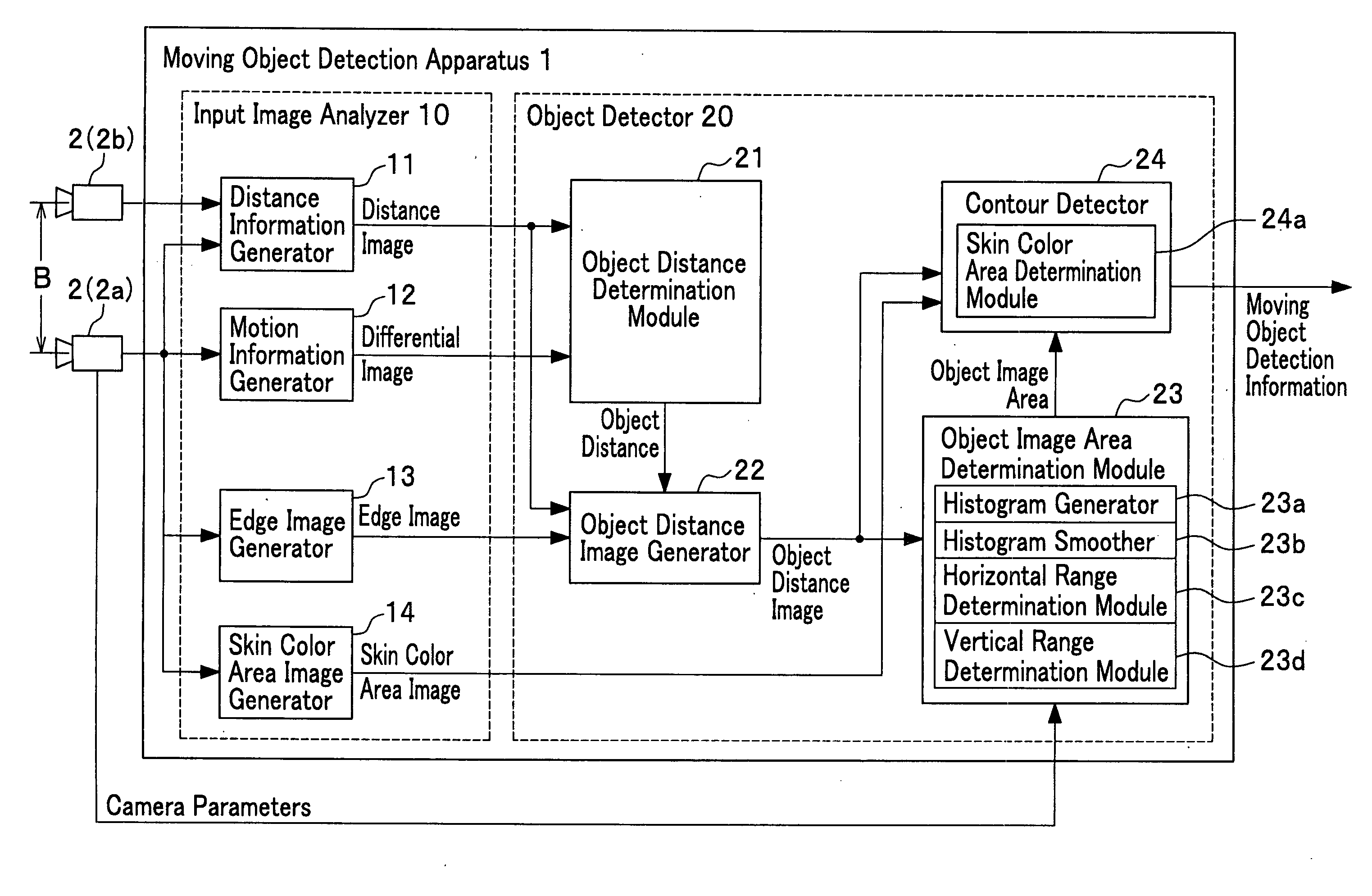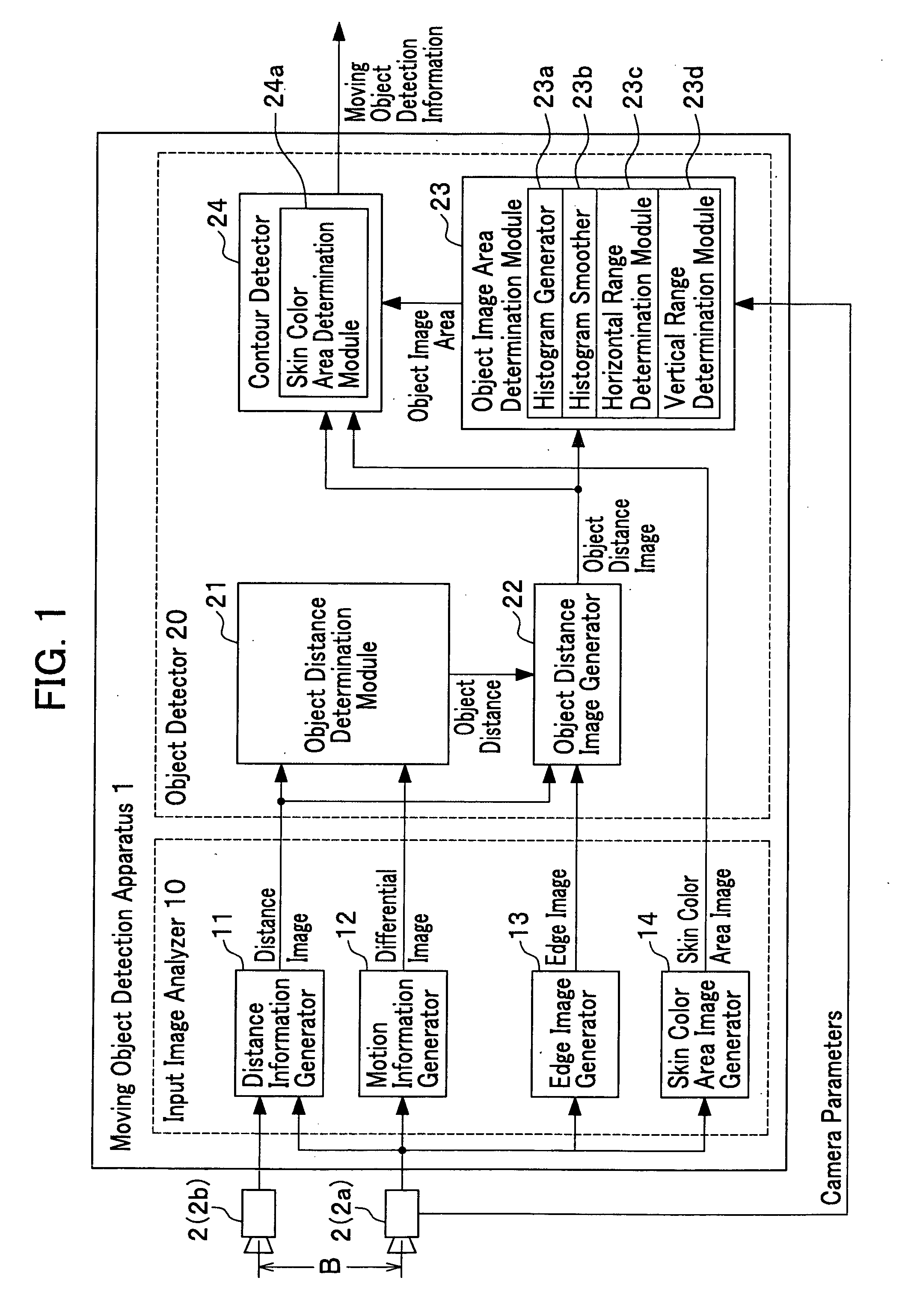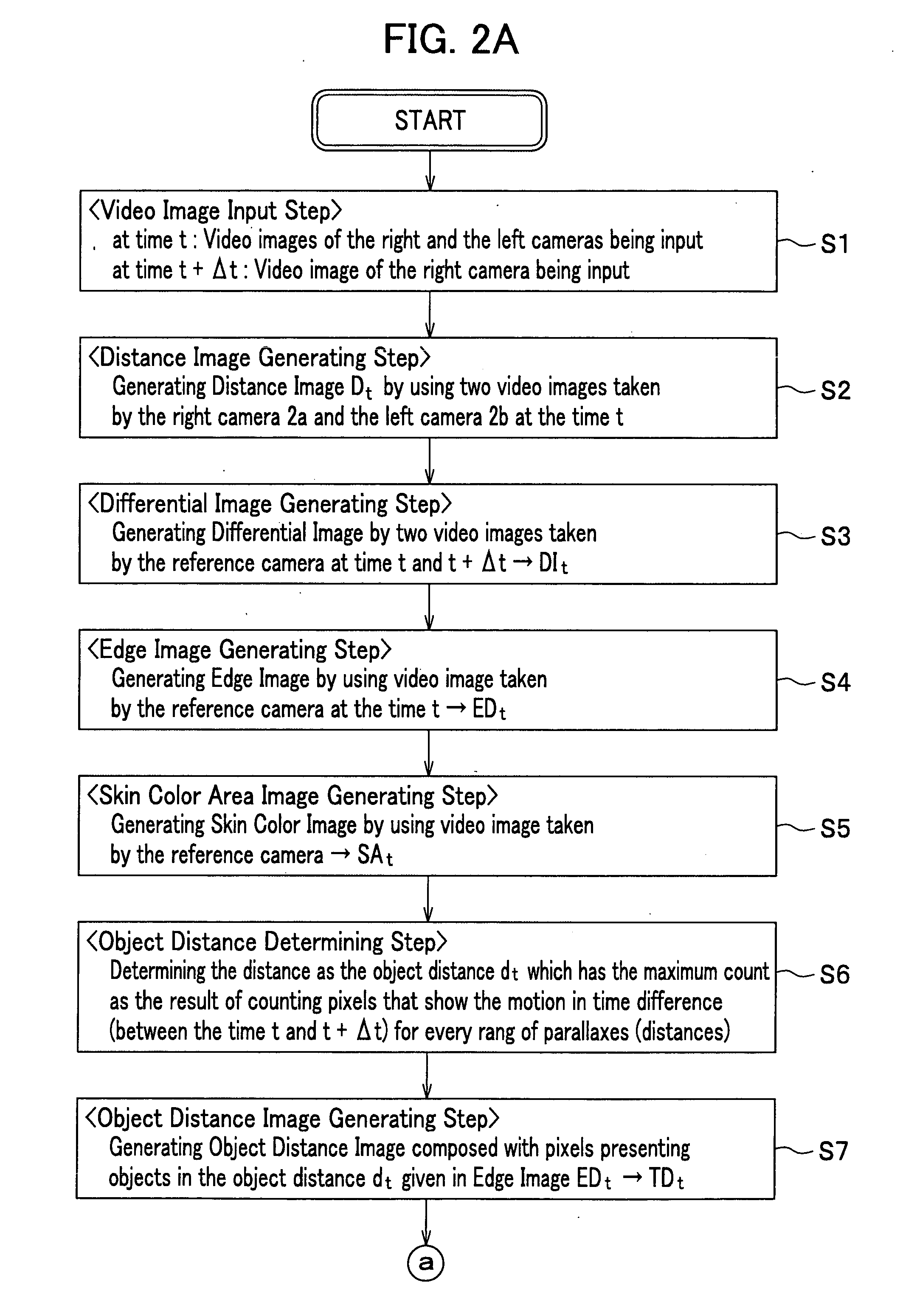Apparatus, method and program for moving object detection
a technology of moving objects and apparatus, applied in the field of apparatus, a method and a program for moving object detection, to achieve the effects of high precision, easy determination of the symmetry of the histogram, and high precision
- Summary
- Abstract
- Description
- Claims
- Application Information
AI Technical Summary
Benefits of technology
Problems solved by technology
Method used
Image
Examples
first embodiment
[0063] the present invention is explained in referring to the figures and equations in the following sections.
(Structure of a Moving Object Detector)
[0064]FIG. 1 shows the whole structure of the moving object detection apparatus 1. The fundamental function of the moving object detection apparatus 1 is to detect the object which is in a motion (we call “moving object”). In this embodiment, the moving object detection apparatus 1 is constructed with an input image analyzer 10 which analyzes the input video images and an object detector 20 which detects the object from the analyzed video images. Two cameras 2 composing the camera 2a and the camera 2b are horizontally set in a separation length B. One is called a right camera 2a set in relatively right position and the other a left camera 2b set in the relatively left position.
[0065] The input image analyzer 10 analyzes the video images taken by the two cameras 2 and synchronously input to the input image analyzer 10. As the result o...
second embodiment
[0172] The symmetry detector 123c detect the symmetries of the histogram HI′ for every three sequential points on the basis of the points (Xn, Sxn′) for the changing point Pn determined by the changing point detector 123b. The second embodiment specifies the difference DS of the pixel numbers for both ends of the three sequential points (we simply call “pixel number difference DS”) . A symmetry parameter is defined by the difference DK of two inclinations (which we simply call the inclination difference DS) : one between the center point and one of the neighboring points and the other between the center point and the other neighboring point.
[0173] The pixel number difference DSn is given by eq. (17) as
DSn=|SXn+2−SXn′|. (17)
The inclination difference DKn is given by eq. (18) as
DKn=|Kn+1−Kn|, (18)
where, the inclination is defined by
Kn=|SXn+1′−SXn′| / |Xn+1−Xn|. (19)
[0174] The above equations are explained by using FIG. 13. The symmetry detector 123c first compute the pixel nu...
PUM
 Login to View More
Login to View More Abstract
Description
Claims
Application Information
 Login to View More
Login to View More - R&D
- Intellectual Property
- Life Sciences
- Materials
- Tech Scout
- Unparalleled Data Quality
- Higher Quality Content
- 60% Fewer Hallucinations
Browse by: Latest US Patents, China's latest patents, Technical Efficacy Thesaurus, Application Domain, Technology Topic, Popular Technical Reports.
© 2025 PatSnap. All rights reserved.Legal|Privacy policy|Modern Slavery Act Transparency Statement|Sitemap|About US| Contact US: help@patsnap.com



